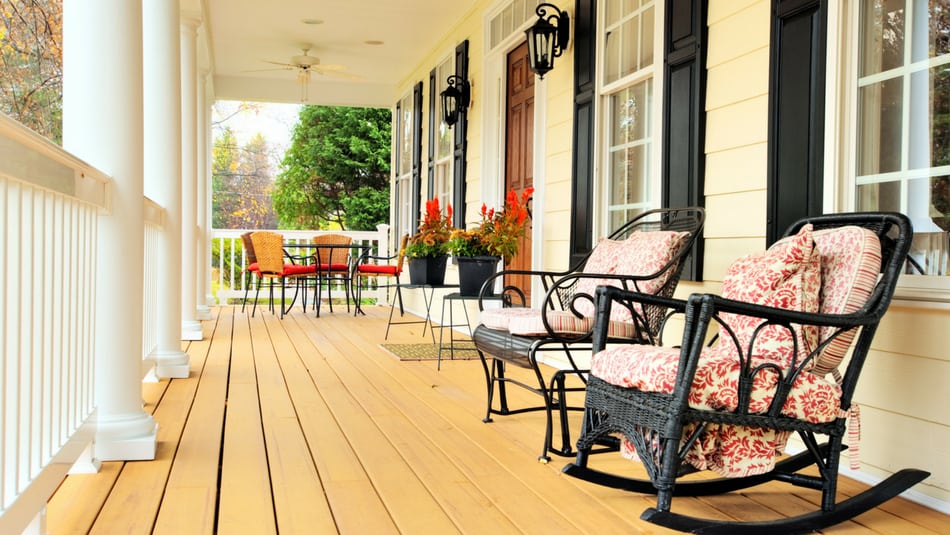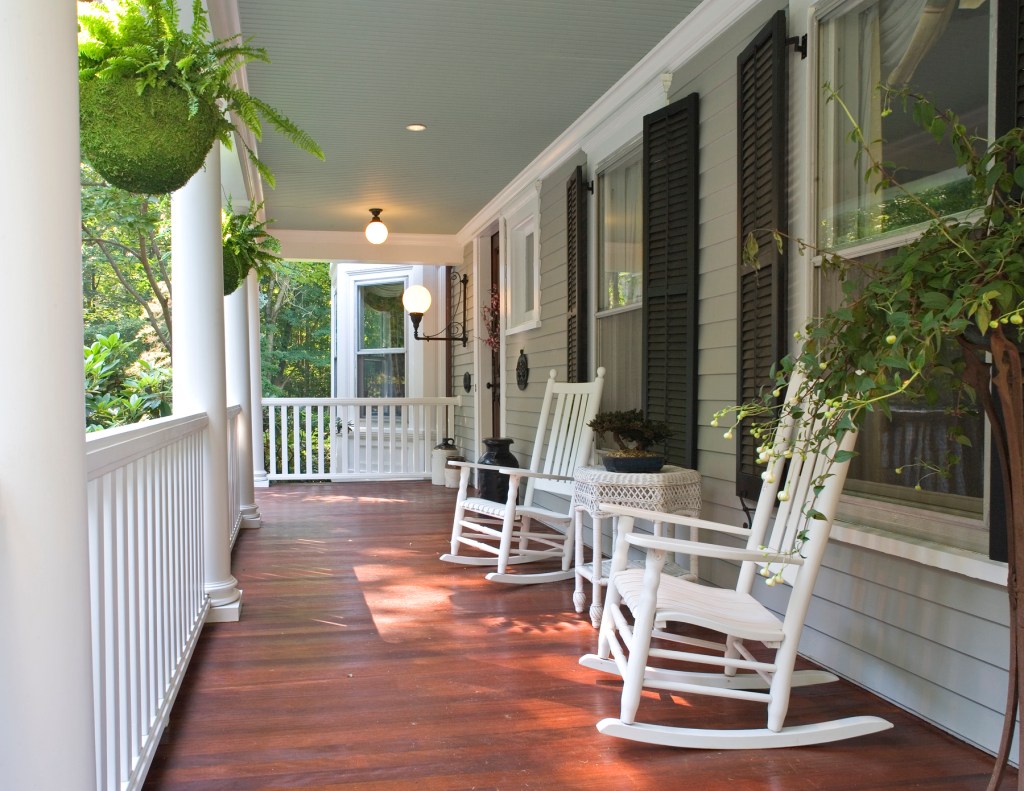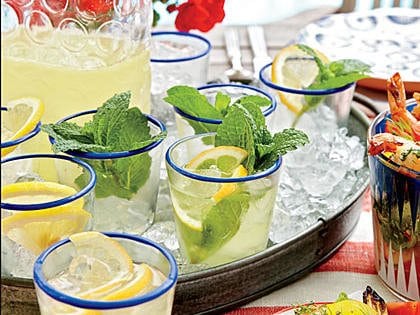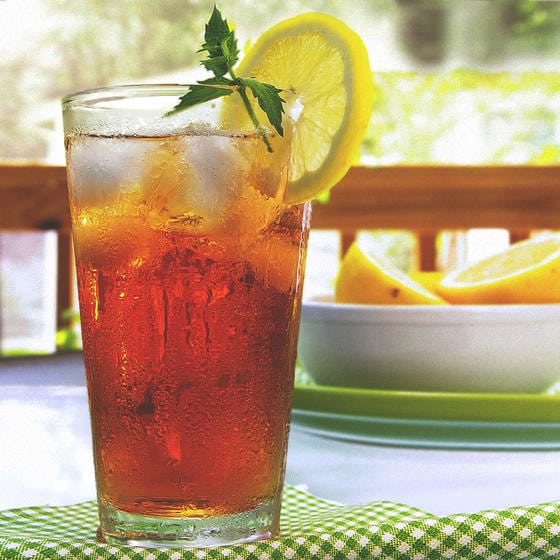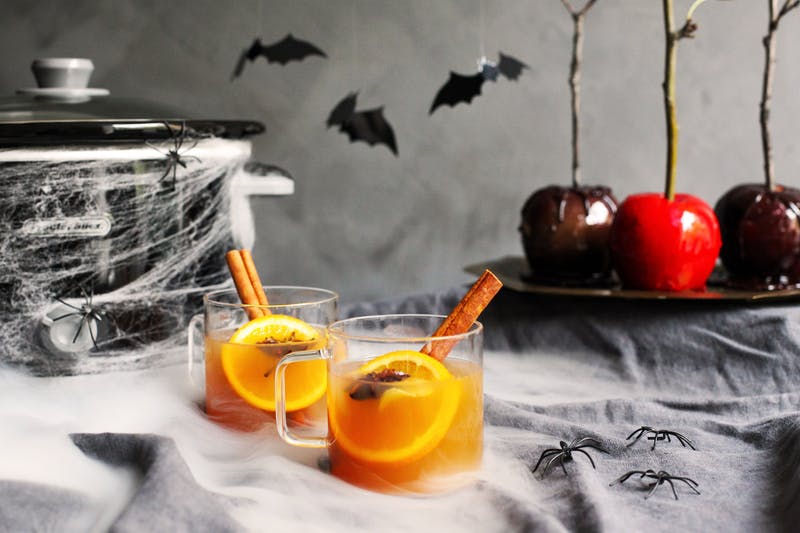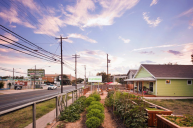There's something nostalgic and sentimental about a porch, especially in Southern culture. We imagine lazy days spent rocking back and forth in the porch swing, drinking sweet tea and lemonade, and greeting neighbors as they stroll down the sidewalk. But the front porch isn't just a summer delight; fall and spring are good porch sitting seasons, too.
The three-season (and in places, three and-a-half-season) front porch is making a come back, with people re-discovering its joys. And it's not just in the South, where the American porch arguably got its start.
So come on and sit a spell while we talk about the American front porch and how to make the most of yours.
History of the Porch
Historically speaking, the porch is ancient history. Buildings in many cultures had some kind of transition space between the public and private or the informal and formal. Greek and Roman buildings had the portico or vestibule where people could gather a little more informally as they entered or left a building. Even covered, both stylistically and functionally this area served as "porch."
In India, there was the bangla, a long open porch, which the English carried home and copied as the veranda. In West Africa, there was a covered area that extended the front of the house, and in the Caribbean, there was the native Arawak bohio. French and Spanish colonial buildings in North America both featured their own long versions of porches.
The American porch in form and function, like many uniquely American things, is a mashup of all these styles and influences, interpreted through our own lens, flavored with regional varieties. In the Northeast, especially in cities like New York and Philadelphia, the porch was a wide set of steps leading up to the house. The stoop (which comes from the Dutch stoep) serves as a place for neighbors and the entire family to gather and relax outside the American home.
In the South, the weather sent the porch in a slightly different direction. Before the days of air conditioning, it was often cooler on a shaded porch than inside. The porch became a comfortable place to spend the day or evening, even sometimes serving as the best place to sleep during the warmest weather. It was the outdoor living room with a perfect view of the front yard.
Builders realized that porches weren't just a functional transition space, they could also make any building look better. In the late 1800s, industrialization drove two things. The first was the growth of a middle class. More families lived comfortably—and just as importantly, wanted to look like they were living comfortably. They moved the family out to the edge of the city where the air was cleaner and there was more land and they built bigger, more elaborate houses where they spent more leisure time enjoying the good life.
The second thing industrialization did was make it possible for more people to have similar looking houses. Because of mass production, a home builder could create a front porch that looked exactly like the one everybody admired down the street. Porches started to move to the category of must-have on a home, but it wasn't too long before it also became simply a pretty, unused feature of the house.
Air Conditioning Killed the Front Porch
One of the greatest inventions of all time, air conditioning made living in the South in the summer bearable. But it also made it unnecessary to seek a more comfortable environment by going outside and avoiding the outdoor air.
And so people started spending more time at home inside. Why sit outside in the heat, even on the relatively more comfortable porch, when you can be inside with the exact temperature you prefer?
Air conditioning had accomplices, though, in killing off the front porch. Other modern conveniences like television drove the American life indoors and a growing desire for privacy and our own space created a whole new drive for in-home entertaining. Open floor plans, custom kitchens, wet bars in the finished basement: New home construction starts including these features in the 50s and 60s and by the end of the 90s, in-home entertainment is king.
At some point, the American ideal also started wanting more private indoor/outdoor space. Decks became wildly popular on new houses and even today, backyards are considered the primary family outdoor space.
Front Porch versus Back Patio
The front porch is inherently different than any kind of outdoor space you have in your backyard. Patio or deck, anything that's an extension of the back of the house is private space, where only family and friends are allowed. The front porch is all about community. It's tough to really use your front porch without being part of the neighborhood.
Over at Strong Town, writer Brian Jones connects the front porch with being a citizen. He says, "It is a catalyst for helping you to get to know your neighbors and those infrequent passersby. The porch is an opportunity to invite a neighbor over to your house and join you for coffee or encourage your children to play with their children. The more frequently your neighbors see you on the porch, the greater the chance of them wanting to socially interact."
He also notes that front porch interactions, even simply seeing and being seen, builds a trust within the community. It's the act of watching out for each other that can't happen when we're all in the backyard or in the friendly confines of our living room.
We hear a lot these days about how people are isolated and lonely, placing human interaction with electronic devices, and people are looking for a way back to the community. Can the front porch be a part of that?
Is the Porch Making a Comeback?
"The number of new U.S. homes built with porches keeps rising. The percentage grew from 42 percent in 1994 to 52 percent in 2004 to 65 percent last year, according to data compiled by the National Association of Home Builders. The latest figures rise to 86 percent in the Southeast, where porches always made the most sense for cooling off, and they're growing in places like Colorado as well. More Millennials than any other age group now want a porch, the association's 2016 survey shows."
More home buyers are looking for porches, not just private outdoor space. But when they buy a home with a porch, are they actually using them? It seems that many front porches still go underused, but there are some efforts to change that.
The Conference on the Front Porch, which happens just outside Oxford, Mississippi, aims to "explore the significance of the front porch in the American South, both from an architectural, as well as a sociological, perspective." There's a Professional Porch Sitters Union Local 1339, founded by Louisville, Kentucky native Claude Stephens.
There's also Porchfest, which started in Ithaca, New York, and has grown to towns and cities across the country. There are now over 60 Porchfests in the United States and Canada, where people host live music concerts on their front porches and invite the neighbors over.
One Porchfest host in Decatur, Georgia, told Pacific Standard about his great experience hosting a Porchfest dance party and how it led to a stronger appreciation of his own front porch even after the event. Ryan Sage said, "Outside of Porchfest there are kids playing, people reading out there with a glass of wine. You see people out in the yard or sitting on the porch, and you can have a conversation with people you've never met before."
If you have a front porch and haven't used it in a while, we encourage you to follow the Porch Sitters Union motto: "Sit down a spell. That can wait."
Sitting a spell on your front porch is a pleasant past time made more so by a refreshing beverage. We've got a few porch sippers perfect for you and any neighbors that happen to wander by.
Lemon-Mint Sparklers
This bright and lovely drink makes a pitcher full, so invite the neighbors over and enjoy some front porch chitchat. One of the best things about this drink is that you can add bourbon to make it more of a happy hour libation, but it's perfect just the way it is, too.
Get the recipe here.
Front Porch Peach Tea
Fruit-flavored iced tea is always an appropriates porch sipper, though this cool, fruity drink packs a bit more punch than the old Paradise Tropical Tea. From the good folks at Jim Beam, this recipe is a cocktail that will make your porch the most popular in the neighborhood.
Get the recipe here.
Slow Cooker Spiked Mulled Cider
Click your heels three times and say, "There's no season like fall." Cooler weather really is just around the corner, but that's no reason to head inside. Stay warm and cozy with this hot cider spiked with just a bit of the good stuff. And if you hide your slow cooker inside a cauldron and leave the booze on the side, this drink is perfect for a Halloween porch party.
Get the recipe here.
